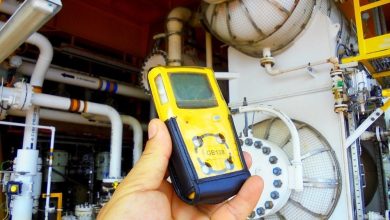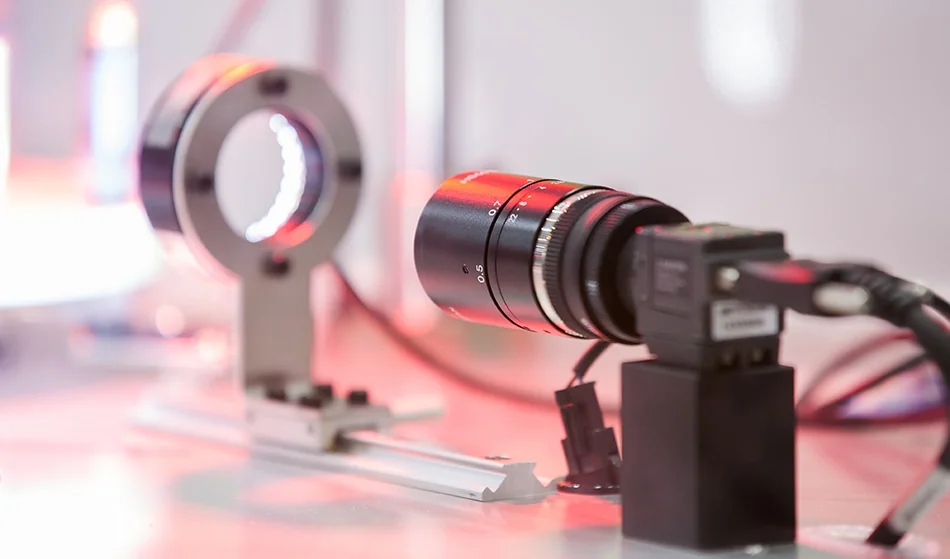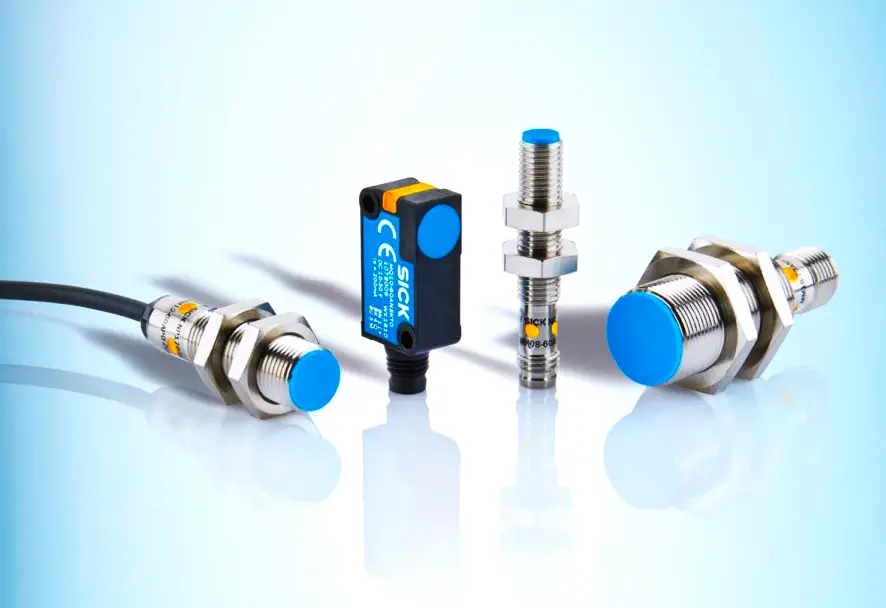Types of Temperature and Humidity Sensors:
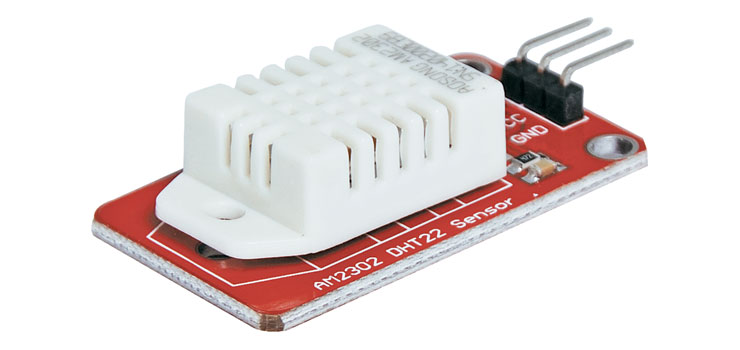
- Temperature and Humidity Sensors:
Temperature and humidity sensors monitor environmental conditions such as temperature, humidity, and atmospheric pressure. These sensors provide valuable data for environmental monitoring, climate control, and safety in robotics applications. Temperature sensors enable robots to operate in extreme temperatures, while humidity sensors ensure optimal performance in humid environments.

Temperature and Humidity Sensors: Gauging Environmental Conditions in Robotics
In the intricate world of robotics, where adaptability and precision reign supreme, temperature and humidity sensors serve as the silent observers, providing invaluable insights into the environmental conditions that robots encounter. These sensors, capable of measuring variations in temperature and humidity levels with exceptional accuracy, enable robots to adjust their behavior, optimize performance, and ensure operational efficiency across diverse applications. Join us as we delve into the realm of temperature and humidity sensors, exploring their principles, functionalities, and transformative role in shaping the landscape of robotics.
Principles of Temperature and Humidity Sensors:
Temperature and humidity sensors operate based on distinct principles tailored to their respective measurements:
- Temperature Sensors:
Temperature sensors measure the thermal energy present in the surrounding environment. They utilize various physical properties that change with temperature, such as resistance, voltage, or capacitance. Common types of temperature sensors include thermocouples, resistance temperature detectors (RTDs), and thermistors. Thermocouples generate a voltage proportional to the temperature difference between two dissimilar metals, while RTDs and thermistors exhibit changes in resistance with temperature variations. These sensors provide accurate temperature readings crucial for monitoring environmental conditions in robotics applications.
- Humidity Sensors:
Humidity sensors, on the other hand, measure the moisture content or relative humidity in the air. They typically employ materials that absorb or adsorb water vapor, causing changes in electrical properties such as capacitance, resistance, or conductivity. Capacitive humidity sensors, for instance, utilize a moisture-absorbing dielectric material to modulate capacitance, while resistive humidity sensors employ humidity-sensitive materials to alter resistance. These sensors offer precise measurements of humidity levels vital for assessing environmental comfort, preventing moisture-related damage, and ensuring optimal performance of robotic systems.

Types of Temperature and Humidity Sensors:
- Thermocouples:
Thermocouples consist of two dissimilar metal wires joined at one end. When exposed to temperature variations, a voltage proportional to the temperature difference between the two junctions is generated, allowing precise temperature measurement over a wide range. Thermocouples are rugged, cost-effective, and suitable for high-temperature applications, making them ideal for industrial robotics, HVAC systems, and temperature monitoring in harsh environments.
Thermocouples: The Precise Thermometric Instruments Powering Robotic Sensing
In the intricate domain of robotics, where precision and adaptability are paramount, thermocouples emerge as the silent heroes, providing invaluable temperature measurement capabilities with exceptional accuracy and reliability. These robust and versatile devices, based on the thermoelectric effect, serve as the cornerstone of temperature sensing in robotics, enabling robots to monitor environmental conditions, ensure operational efficiency, and safeguard critical systems across diverse applications. Join us on a journey through the realm of thermocouples, unraveling their principles, functionalities, and transformative role in shaping the landscape of robotics.
- Principles of Thermocouples:
Thermocouples operate on the fundamental principle of the thermoelectric effect, where a temperature gradient between two dissimilar metals generates a voltage proportional to the temperature difference. This phenomenon, known as the Seebeck effect, is the cornerstone of thermocouple operation. When two different metals are joined at one end to form a junction, and the other ends are maintained at different temperatures, a voltage is generated across the junction in direct proportion to the temperature difference.
The voltage generated by the thermocouple is directly related to the temperature at the measurement junction, allowing for precise temperature measurement. By selecting appropriate metal combinations and calibrating the thermocouple according to standardized temperature tables, accurate temperature readings can be obtained across a wide range of temperatures, making thermocouples indispensable instruments for temperature sensing in robotics and industrial applications.
Types of Thermocouples:
Thermocouples are classified based on the materials used for their construction, each offering distinct temperature ranges, sensitivities, and characteristics:
- Type K (Chromel/Alumel):
Type K thermocouples are among the most widely used thermocouples, renowned for their wide temperature range (-200°C to +1350°C), high sensitivity, and robustness. They consist of a chromel wire (90% nickel, 10% chromium) and an alumel wire (95% nickel, 2% aluminum, 2% manganese) joined at the sensing junction. Type K thermocouples find applications in industrial automation, HVAC systems, and temperature monitoring in harsh environments.
- Type J (Iron/Constantan):
Type J thermocouples utilize iron and constantan (55% copper, 45% nickel) wires for temperature measurement. They offer a moderate temperature range (-40°C to +750°C) and exhibit good sensitivity and stability. Type J thermocouples are commonly used in food processing, pharmaceuticals, and laboratory applications due to their reliability and affordability.
- Type T (Copper/Constantan):
Type T thermocouples employ copper and constantan wires for temperature sensing. They offer a wide temperature range (-200°C to +350°C) and excellent accuracy, particularly at low temperatures. Type T thermocouples are well-suited for cryogenic applications, refrigeration systems, and temperature measurement in scientific research.
- Type E (Chromel/Constantan):
Type E thermocouples feature chromel and constantan wires, providing a temperature range (-200°C to +900°C) with high accuracy and stability. They exhibit exceptional sensitivity to temperature variations, making them suitable for precision temperature measurement in laboratory, medical, and aerospace applications.
- Type N (Nicrosil/Nisil):
Type N thermocouples utilize nicrosil (84% nickel, 14.2% chromium, 1.4% silicon) and nisil (95% nickel, 5% silicon) wires for temperature sensing. They offer a wide temperature range (-200°C to +1300°C) with improved stability and resistance to oxidation compared to Type K thermocouples. Type N thermocouples are employed in industrial furnaces, gas turbines, and automotive exhaust systems.
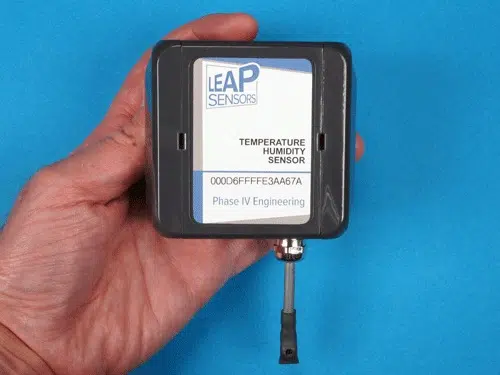
Functionalities of Thermocouples:
Thermocouples play a pivotal role in robotics applications by providing the following functionalities:
Temperature Monitoring and Control:
Thermocouples enable robots to monitor ambient temperatures, ensuring optimal operating conditions and preventing overheating or thermal damage. By measuring temperature variations in critical components, thermocouples facilitate real-time temperature control, allowing robots to adjust their behavior, optimize performance, and ensure operational efficiency across diverse applications.
- Process Optimization:
Thermocouples contribute to process optimization in robotics by providing accurate temperature measurements in manufacturing, materials processing, and industrial automation. By monitoring temperature profiles during production processes, thermocouples help optimize process parameters, improve product quality, and minimize energy consumption, driving efficiency and productivity in robotic manufacturing environments.
- Safety and Reliability:
Thermocouples enhance the safety and reliability of robotic systems by providing early detection and mitigation of temperature-related hazards or anomalies. By continuously monitoring temperature levels, thermocouples help identify abnormal conditions, trigger alarms or shutdowns, and prevent thermal damage or catastrophic failures, ensuring the safety and integrity of robotic operations in critical applications.
- Environmental Sensing:
Thermocouples enable robots to sense and respond to environmental temperature variations, enhancing situational awareness and adaptability in diverse settings. By measuring ambient temperatures in indoor and outdoor environments, thermocouples help robots navigate complex terrain, assess weather conditions, and perform tasks such as environmental monitoring, agriculture, and infrastructure inspection.
- Diagnostic and Maintenance:
Thermocouples facilitate diagnostic and maintenance activities in robotics by providing valuable insights into temperature trends and anomalies. By analyzing temperature data collected by thermocouples, engineers can identify potential issues, predict component failures, and schedule preventive maintenance, minimizing downtime and maximizing uptime in robotic systems.
Significance of Thermocouples in Robotics:
Thermocouples play a critical role in robotics applications by providing accurate, reliable, and real-time temperature measurement capabilities. From temperature monitoring and process control to safety and reliability, thermocouples contribute to the efficiency, performance, and longevity of robotic systems across diverse applications and industries. As robotics technology continues to evolve and expand, the significance of thermocouples in robotics applications will only continue to grow, driving innovation, enhancing capabilities, and shaping the future of automation and robotics.
- RTDs (Resistance Temperature Detectors):
RTDs are temperature sensors that rely on the principle of electrical resistance variation with temperature. They consist of a fine wire or thin film made of a temperature-sensitive material, such as platinum or nickel. As the temperature changes, the resistance of the RTD element changes proportionally, enabling accurate temperature measurement. RTDs offer high accuracy, stability, and linearity, making them suitable for precision temperature control, medical devices, and laboratory instrumentation.
RTDs (Resistance Temperature Detectors): Precision Temperature Sensing for Robotic Applications
In the realm of robotics, where accuracy, reliability, and adaptability are paramount, Resistance Temperature Detectors (RTDs) stand as indispensable components, providing precise and reliable temperature measurement capabilities. RTDs, based on the principle of electrical resistance variation with temperature, offer exceptional accuracy, stability, and linearity, making them ideal for a wide range of robotics applications. Join us as we delve into the intricacies of RTDs, exploring their principles, functionalities, and transformative role in shaping the landscape of temperature sensing in robotics.
Principles of RTDs
RTDs operate on the fundamental principle of the relationship between electrical resistance and temperature, known as the temperature-resistance characteristic. RTDs typically consist of a fine wire or thin film made of a temperature-sensitive material, such as platinum, nickel, or copper. As the temperature changes, the electrical resistance of the RTD element changes proportionally, following a predictable and linear relationship defined by the temperature-resistance curve.
Platinum RTDs are the most commonly used type due to their excellent stability, linearity, and repeatability over a wide temperature range. The resistance of a platinum RTD typically increases linearly with temperature, making it highly suitable for precision temperature measurement applications. By monitoring the electrical resistance of the RTD element and correlating it with temperature using standardized calibration curves, accurate temperature readings can be obtained with exceptional precision and reliability.

Types of RTDs:
RTDs are classified based on the materials used for their construction, each offering distinct temperature ranges, sensitivities, and characteristics:
- Platinum RTDs:
Platinum RTDs are the most widely used type of RTDs, known for their high stability, accuracy, and linearity over a wide temperature range (-200°C to +850°C). They consist of a platinum wire or thin film encapsulated in a protective sheath, typically made of ceramic or glass. Platinum RTDs offer excellent repeatability, long-term stability, and resistance to corrosion, making them suitable for precision temperature measurement in laboratory, industrial, and aerospace applications.
- Nickel RTDs:
Nickel RTDs utilize nickel or nickel-alloy wires as the sensing element for temperature measurement. They offer a moderate temperature range (-80°C to +300°C) and good stability, particularly at lower temperatures. Nickel RTDs are cost-effective alternatives to platinum RTDs for applications requiring moderate accuracy and precision, such as HVAC systems, automotive engines, and food processing equipment.
- Copper RTDs:
Copper RTDs employ copper wires as the sensing element for temperature measurement. They offer a limited temperature range (-50°C to +150°C) and lower accuracy compared to platinum or nickel RTDs. Copper RTDs are commonly used in low-temperature applications where cost-effectiveness and simplicity are paramount, such as household appliances, consumer electronics, and environmental monitoring systems.
Functionalities of RTDs
RTDs play a crucial role in robotics applications by providing the following functionalities:
- Precision Temperature Measurement:
RTDs enable robots to measure temperature with exceptional accuracy and reliability, ensuring precise control and monitoring of thermal conditions in critical components and environments. By accurately sensing temperature variations, RTDs help robots optimize performance, prevent overheating, and ensure operational efficiency in diverse applications such as industrial automation, automotive systems, and medical devices.
- Stability and Linearity:
RTDs offer high stability and linearity over a wide temperature range, providing consistent and repeatable temperature measurements under varying operating conditions. By maintaining stable resistance-temperature characteristics, RTDs ensure reliable performance and long-term accuracy in robotics applications, minimizing measurement errors and deviations over time.
- Compatibility and Integration:
RTDs are compatible with a wide range of measurement systems, data acquisition devices, and control systems, facilitating seamless integration into robotic platforms and systems. By providing standardized electrical outputs, such as resistance or voltage, RTDs can be easily interfaced with microcontrollers, PLCs, and other digital or analog devices, enabling real-time temperature monitoring and control in robotics applications.
- Durability and Reliability:
RTDs are robust and durable temperature sensors, capable of withstanding harsh operating conditions and environmental challenges. With their rugged construction and resistance to corrosion, vibration, and mechanical stress, RTDs offer long-term reliability and performance in demanding robotics applications, ensuring uninterrupted operation and minimal maintenance requirements.
- Calibration and Compensation:
RTDs can be calibrated and compensated to account for variations in sensor characteristics, lead resistance, and environmental factors, ensuring accurate temperature measurement under diverse operating conditions. By calibrating RTDs against reference standards and applying compensation techniques, robots can achieve precise temperature measurement and compensate for errors introduced by external factors such as wiring resistance, temperature gradients, and electromagnetic interference.
Significance of RTDs in Robotics:
RTDs play a pivotal role in robotics applications by providing accurate, reliable, and stable temperature measurement capabilities essential for precise control, monitoring, and optimization of thermal conditions. From industrial automation and process control to automotive systems and environmental monitoring, RTDs contribute to the efficiency, safety, and performance of robotic systems across diverse applications and industries. As robotics technology continues to advance and evolve, the significance of RTDs in robotics applications will only continue to grow, driving innovation, enhancing capabilities, and shaping the future of automation and robotics.
- Thermistors:
Thermistors are semiconductor devices whose electrical resistance changes significantly with temperature variations. They exhibit a nonlinear response to temperature changes, with resistance decreasing as temperature increases (negative temperature coefficient – NTC thermistors) or increasing with temperature (positive temperature coefficient – PTC thermistors). Thermistors provide high sensitivity and fast response times, making them suitable for temperature sensing in consumer electronics, automotive systems, and environmental monitoring applications.
- Capacitive Humidity Sensors:
Capacitive humidity sensors measure relative humidity by detecting changes in capacitance caused by moisture absorption or desorption. These sensors consist of a moisture-sensitive dielectric material sandwiched between two conductive plates. As humidity levels change, the dielectric constant of the material varies, altering the capacitance of the sensor. Capacitive humidity sensors offer high accuracy, low hysteresis, and fast response times, making them ideal for HVAC systems, weather stations, and indoor air quality monitoring.
- Resistive Humidity Sensors:
Resistive humidity sensors employ humidity-sensitive materials, such as polymers or ceramics, whose electrical resistance changes with moisture absorption or desorption. These sensors measure humidity levels by monitoring changes in resistance caused by humidity-induced variations in the sensor material. Resistive humidity sensors offer simplicity, low cost, and compatibility with integrated circuits, making them suitable for portable devices, consumer electronics, and industrial automation applications.
Functionalities of Temperature and Humidity Sensors:
Temperature and humidity sensors play a crucial role in robotics applications by providing the following functionalities:

- Environmental Monitoring:
Temperature and humidity sensors enable robots to monitor environmental conditions in real-time, allowing them to adapt their behavior and optimize performance accordingly. By measuring temperature and humidity levels, sensors help robots assess ambient conditions, detect anomalies, and ensure operational efficiency across diverse applications such as agriculture, smart homes, and industrial automation.
- Condition Monitoring:
Temperature and humidity sensors facilitate condition monitoring of robotic systems and components, allowing early detection of potential issues or failures. By continuously monitoring temperature and humidity levels, sensors help identify abnormal operating conditions, prevent overheating or moisture-related damage, and enhance the reliability and longevity of robotic systems in industrial, automotive, and aerospace applications.
- Energy Efficiency:
Temperature and humidity sensors contribute to energy efficiency in robotics applications by enabling precise control of heating, ventilation, and air conditioning (HVAC) systems. By monitoring temperature and humidity levels in indoor environments, sensors help optimize HVAC system operation, reduce energy consumption, and enhance occupant comfort in buildings, offices, and residential spaces inhabited by robots or humans.
- Process Control:
Temperature and humidity sensors play a crucial role in process control and automation applications by providing accurate measurement and regulation of environmental parameters. By monitoring temperature and humidity levels in manufacturing, food processing, and pharmaceutical industries, sensors help maintain optimal conditions for production processes, ensure product quality and safety, and comply with regulatory standards and guidelines.
- Environmental Sensing:
Temperature and humidity sensors enable robots to sense and respond to changes in the surrounding environment, enhancing situational awareness and adaptability in outdoor and indoor settings. By measuring temperature and humidity levels in outdoor environments, sensors help robots navigate challenging terrain, assess weather conditions, and perform tasks such as search and rescue, environmental monitoring, and precision agriculture.
Significance of Temperature and Humidity Sensors in Robotics:
- Precision and Accuracy:
Temperature and humidity sensors provide robots with precise and accurate measurements of environmental conditions, enabling them to make informed decisions and adapt their behavior in real-time. By ensuring accurate sensing and control of temperature and humidity levels, sensors enhance the reliability, performance, and safety of robotic systems across diverse applications.
- Adaptability and Flexibility:
Temperature and humidity sensors enhance the adaptability and flexibility of robots by enabling them to operate effectively in diverse environments and conditions. By monitoring temperature and humidity levels, sensors help robots assess environmental suitability, optimize performance parameters, and ensure seamless operation in dynamic and changing environments.
- Efficiency and Productivity:
Temperature and humidity sensors contribute to efficiency and productivity in robotics applications by optimizing resource utilization and minimizing energy consumption.
By providing real-time feedback on environmental conditions, sensors help robots optimize energy usage, reduce operational costs, and maximize productivity in industrial, commercial, and residential settings.
- Safety and Reliability:
Temperature and humidity sensors enhance the safety and reliability of robotic systems by enabling early detection and mitigation of potential hazards or risks. By monitoring temperature and humidity levels, sensors help identify abnormal conditions, prevent overheating or moisture-related damage, and ensure safe and reliable operation of robotic systems in critical applications such as manufacturing, healthcare, and transportation.

- Innovation and Advancement:
Temperature and humidity sensors drive innovation and advancement in robotics technology by enabling new capabilities and functionalities. By providing robots with the ability to sense and respond to environmental conditions, sensors open up new opportunities for automation, autonomy, and intelligent decision-making in robotics applications, driving progress and innovation in diverse industries and domains.
In conclusion, temperature and humidity sensors play a pivotal role in robotics applications by enabling robots to sense, monitor, and adapt to environmental conditions with precision and accuracy. From environmental monitoring and condition monitoring to energy efficiency and process control, temperature and humidity sensors contribute to the efficiency, safety, and reliability of robotic systems across diverse applications. As robotics technology continues to evolve and expand, the significance of temperature and humidity sensors in robotics applications will only continue to grow, driving innovation, enhancing performance, and shaping the future of automation and robotics.


